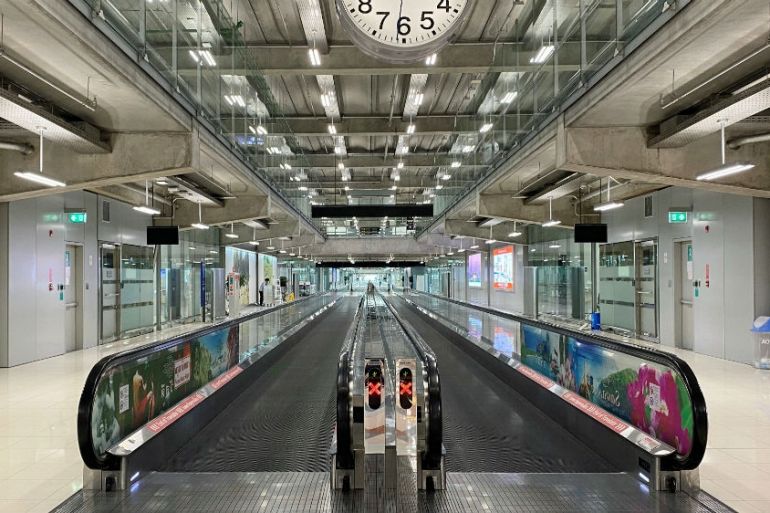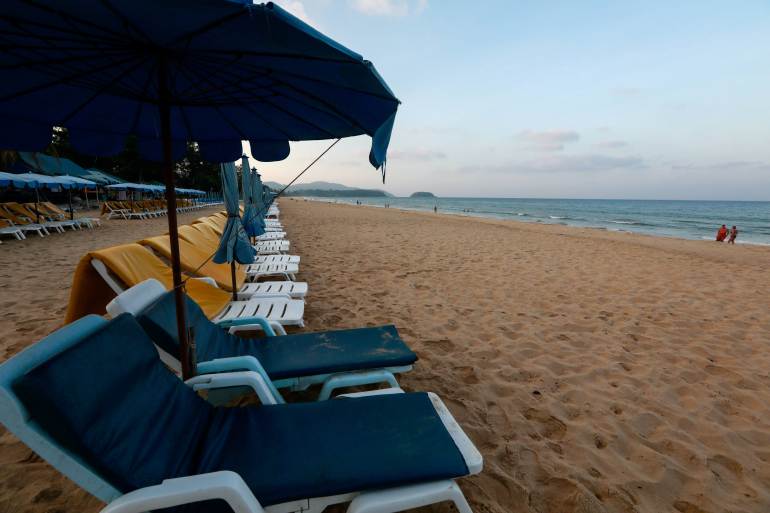Collapse of tourism cost five Asian nations 1.6 million jobs: UN
Almost one-third of job losses in the Philippines, Vietnam, Thailand, Brunei and Mongolia was in tourism, report says

Hwaseong, South Korea – The collapse of tourism due to the pandemic wiped out 1.6 million jobs in five Asian countries alone last year, according to the International Labour Organization (ILO).
The Philippines, Vietnam, Thailand, Brunei and Mongolia saw almost one-third of all job losses occur in the tourism sector, according to a report released by the United Nations agency on Thursday.
Keep reading
list of 4 itemsJapan’s economy shrinks faster than expected in Q3
China’s economy bests expectations amid property market fears
As COVID surges, Southeast Asia struggles to vaccinate citizens
Tourism-related job losses were four times greater than losses in other industries, according to the report, with women especially hard hit.
Chihoko Asada-Miyakawa, ILO regional director for Asia and the Pacific, said the impact of COVID-19 on tourism in the region had been “nothing short of catastrophic”.
“Even with countries in the region focusing heavily on vaccinations and designing strategies to slowly re-open borders, jobs and working hours in the tourism-related sector are likely to remain below their pre-crisis numbers in Asia–Pacific countries into next year,” Asada-Miyakawa said.

Brunei saw the steepest decline in employment, shrinking 40 percent, according to the report, while average hours worked contracted 21 percent.
In the Philippines, tourism-related employment shrank 28 percent, while average hours declined 38 percent. In Vietnam, average wages in the sector fell 18 percent overall — and 28 percent for women.
Thailand, which generated about 20 percent of GDP from tourism before the pandemic, saw average wages fall by 9.5 percent.
In Mongolia, employment and average hours declined 17 percent and 13 percent, respectively.
As of September, arrivals to most of Asia were down 99 percent compared with pre-pandemic levels, according to data from Capital Economics, compared with 20 percent in Mexico and about 65 percent for Southern Europe.
About 291 million tourists visited the Asia-Pacific in 2019, contributing about $875bn to the economy, according to World Economic Forum data.
Gareth Leather, senior economist for Asia at Capital Economics, said the collapse of tourism had inflicted a heavy economic toll right across the region.
“Before the crisis, tourism accounted for around 10 percent of GDP in a number of places, including Thailand, Hong Kong, Malaysia and Cambodia. For nearly two years, these countries have had no arrivals at all,” Leather said.
“Governments have stepped up their support, but the level of spending has been much lower than in developed markets. Poverty and economic hardship will have increased significantly.”
Sara Elder, an ILO senior economist and the author of its latest report, said the crisis and likelihood of a slow recovery in the near-term would force tourism-dependent countries to consider ways to diversify their economies.
“Recovery will take time and affected workers and enterprises in the tourism sector will continue to require assistance to replace lost incomes and preserve assets,” Elder said. “Governments should continue to implement support measures, while striving to vaccinate all residents, migrant workers included.”